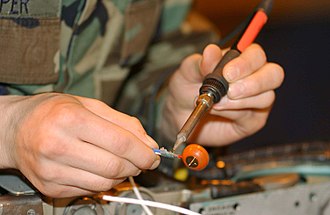I want to fabricate a black-powder, "pirate-type" cannon. The length of the barrel will be 20 inches, and the largest section of the breech, will be about 5 inches in diameter. For the barrel, I plan to use a thick walled steel tube measuring 18 inches long with an outside diameter of 2.75 inches X 1.250 inches inside diameter (bore dimension). A breech-plug will be welded into the back end of the barrel. The breech section will be approximately 12 inches long. I will bore a blind hole in it, 10 inches deep, and I will basically force the barrel section into the breech section. However, I would also like to add decorative moldings to the breech area and would like to "stack" some larger diameter slices of 6 inch diameter round stock to the breech area. I will be essentially stacking steel "doughnuts"onto the barrel tube. The larger diameter moldings will be turned to profile after everything is stacked, and forced together. My friend has a lathe, and chucks that can easily handle this size work. The "force-fitting" is my problem. Other than using a large press, I will have to beat the barrel into the breech section with a big hammer.
I'm hoping that after all the sections are made, I will be able to assemble the cannon by a using light force fits. I plan on heating the breech section and cooling the barrel by freezing, then quickly sliding the sections together...and praying, a lot. After reaching room temperature, they will be locked together, Assuming that I could accurately bore a straight hole into the breech just slightly smaller, by a few thousandths, than the outside diameter of the barrel, can I silver solder/braze the whole assembly together so that no seams show? I would also like to braze/solder the trunnions into the gun, and form nice, finished looking, fillets. My ultimate goal is for this barrel to look like it was turned from a solid hunk of steel.
Is there any hope of doing this kind of thing in a home shop, or should I take the whole thing, after machining, to a iron works and let them force fit, and braze the whole thing together. I know I have been rather vague but I was just hoping for your best guesses as to my success. Will Home Depot type MAPP gas and burners be able to heat the breech so that it expands big enough for me to slip in the barrel?
Casting, and subsequent boring of this barrel are beyond what I can afford at this point. The scrap yard is my only option, and the little boy in me is calling. Is there a better way to do this kind of job?
Opinions....options....
Frank






